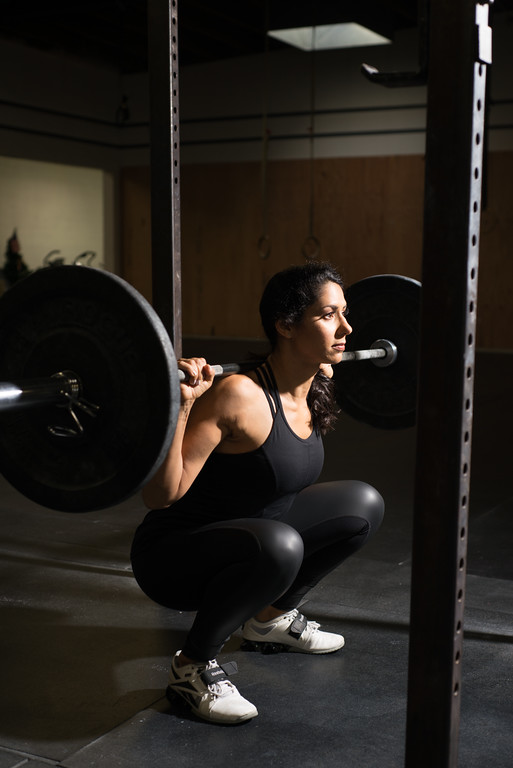This post is a reiteration of the 21 Days of Movement and Mobility series, a free, 21-day email series packed with coaching insights and tips to help you improve the movement quality in major lifts as well as your mobility overall. You can sign up and join in for free HERE.
Before I started powerlifting, my barbell squat was mediocre at best (around 115lbs with passable form). I knew how to execute a fairly decent lift, but the heavier the bar got the more my technique slipped and the more uncomfortable I got squatting.
What I didn’t know then was that I could improve my strength and technique with different training variables aside from adding more weight to the bar. Sure, training heavy has its place for getting us strong, but oftentimes, the training is about getting you comfortable under a certain load, or a specific position in the lift before throwing on more plates.
This is why I’ve come to love pause squats in my training. And by love I mean “Wow, this sucks but it’s actually helpful so I’ll shut up about it.” In fact, I’ve found it so beneficial in getting people strong, that I use it with my general population clients as well.
The goal of the pause squat – be it with a barbell or kettlebell, is to develop and solidify your technique, expose any flaws you may have, and teach you to really own the movement in the bottom position where most people get stuck.
That’s one reason to love them, but other very useful reasons to start using pauses more often:
- It’s another way to make your workouts intense, without having to add more reps or more weight
- It gets you more comfortable and confident under a heavy bar or in the hardest position of the lift, which is from the bottom
- Forces your to hold the hardest position of the lift with solid form and then rise out of the bottom position without collapsing into your back
- Pauses ensure you don’t get buried under a heavy weight when the time comes to hit a PR
 One of the biggest problems I see with trainees is that they simply move too fast. They rush through exercises hoping to complete it as quickly as possible and move on. Adding pauses is one way to get them to slow down and pay attention to their body in the middle of a movement.
One of the biggest problems I see with trainees is that they simply move too fast. They rush through exercises hoping to complete it as quickly as possible and move on. Adding pauses is one way to get them to slow down and pay attention to their body in the middle of a movement.
How to Add Pause Squats into Your Training
Whether this is new to you or not, pauses will teach you a lot about movement quality and make you super strong.
Here are a few simple ways to incorporate them:
- You can make pause squats your primary lift of the day or your second accessory lift.
- Start with 50% of the heaviest weight you’ve every done. For example, if your best front squat is 110lbs, then you perform it at 55 lbs. This might sound low but trust me, adding pauses makes the weight feel a lot heavier!
- For the first-timer and/or if you’re using a barbell, a 3-second pause is a great way to start, but you want to work your way up to a 5-second hold by week 2 or 3.
- If you’re a first timer but using a dumbbell or kettlebell in a goblet squat, start with a 5-second hold in the bottom position
- As you hold the pause, allow your quads and hamstrings to relax while maintaining a tight, core. This isn’t the time to chill out and tell your trainer a story. This should feel hard!
Over time, you can progress to heavier loads for more sets and reps! Once I started adding pauses to my barbell squats I saw a dramatic boost in strength and technique. I felt more comfortable with heavier weight, and took my squat from a 115lbs to 190lbs!!
Whether your goal is to improve body composition, strength, or have better technique, the pause squat is one of my favorite training variables to use with myself and clients at every level.
Never miss a post! Get free weekly content, coaching tips, and promo deals by joining my email list below!

